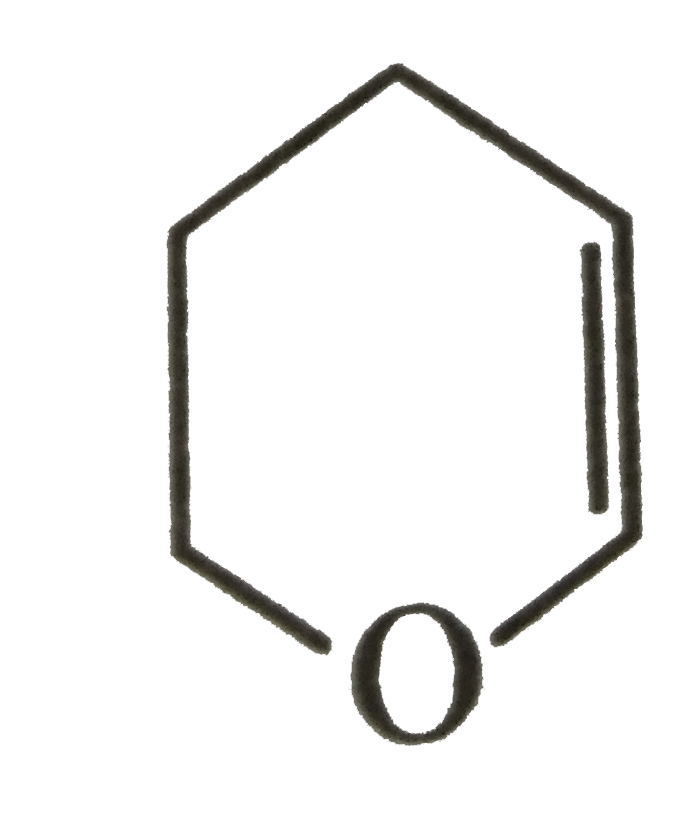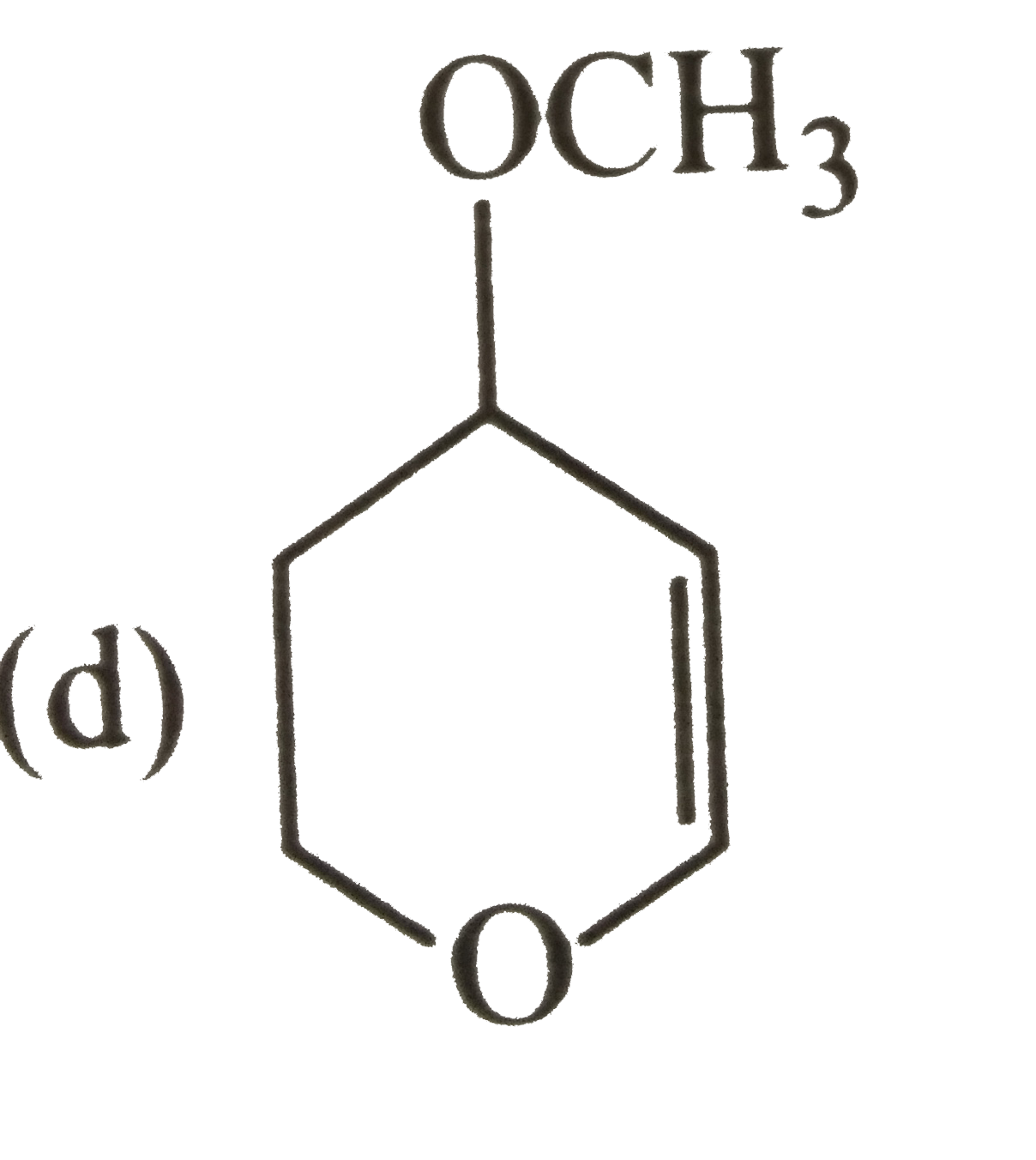(Z) -3- bromo -3- hexene when treated with CH3O− in CH3OH gives
3 - hexyne
2 - hexyne
2, 3 - hexadiene
2, 4 - hexadiene
The correct Answer is:A
To solve the problem of what happens when (Z)-3-bromo-3-hexene is treated with CH₃O⁻ in CH₃OH, we can follow these steps:
Step 1: Understand the Structure of (Z)-3-bromo-3-hexene
- (Z)-3-bromo-3-hexene has a double bond at the 3rd carbon of the hexane chain, with a bromine atom attached to the same carbon. The (Z) configuration indicates that the higher priority groups (the bromine and the ethyl group) are on the same side of the double bond.
Step 2: Identify the Reactant
- The reactant CH₃O⁻ is a methoxide ion, which is a strong base. It can abstract protons from the molecule.
Step 3: Proton Abstraction
- The methoxide ion will abstract a proton from the carbon adjacent to the double bond (C-2 or C-4). Since the double bond is at C-3, we will focus on the proton at C-2, which is sp² hybridized and more acidic than the sp³ hybridized carbons.
Step 4: Formation of a Carbanion
- When the proton is abstracted from C-2, a carbanion is formed at that position. This carbanion will be stabilized by the adjacent double bond.
Step 5: Elimination of Bromine
- The presence of the carbanion at C-2 will facilitate the elimination of the bromine atom at C-3. This results in the formation of a triple bond between C-2 and C-3.
Step 6: Resulting Product
- The final product will be 3-hexyne, which is a linear alkyne. The structure will have the triple bond between C-2 and C-3, with the ethyl groups remaining on C-1 and C-4.
Final Answer
The product formed when (Z)-3-bromo-3-hexene is treated with CH₃O⁻ in CH₃OH is 3-hexyne.
---
- (Z)-3-bromo-3-hexene has a double bond at the 3rd carbon of the hexane chain, with a bromine atom attached to the same carbon. The (Z) configuration indicates that the higher priority groups (the bromine and the ethyl group) are on the same side of the double bond.
- The reactant CH₃O⁻ is a methoxide ion, which is a strong base. It can abstract protons from the molecule.
- The methoxide ion will abstract a proton from the carbon adjacent to the double bond (C-2 or C-4). Since the double bond is at C-3, we will focus on the proton at C-2, which is sp² hybridized and more acidic than the sp³ hybridized carbons.
- When the proton is abstracted from C-2, a carbanion is formed at that position. This carbanion will be stabilized by the adjacent double bond.
- The presence of the carbanion at C-2 will facilitate the elimination of the bromine atom at C-3. This results in the formation of a triple bond between C-2 and C-3.
- The final product will be 3-hexyne, which is a linear alkyne. The structure will have the triple bond between C-2 and C-3, with the ethyl groups remaining on C-1 and C-4.
The product formed when (Z)-3-bromo-3-hexene is treated with CH₃O⁻ in CH₃OH is 3-hexyne.
Topper's Solved these Questions
Similar Questions
What happens when
(a) Sodium phenoxide is treated with CH3Cl?
(b) CH2=CH−CH2−OH is oxidised by PCC?
(c) Phenol is treated with CH3COCl/anhydrous AICI3 ? Write chemical equations in support of your answer.
View SolutionGive reasons for the following :
(i) Phenol is more acidic than methanol.
(ii) The C-O-H bond angle in alcohols is slightly less than the tetrahedral angle (109∘28').
(iii) (CH3)3C−O−CH3 on reaction with HI gives (CH3)3C−IandCH3−OH as the main products and not (CH3)3C−OHandCH3−I.
View Solution
Knowledge Check
 on reaction with CH3OH in presence of H+ gives :A
on reaction with CH3OH in presence of H+ gives :A B
B C
C D
D
When ethylamine is treated with CH3MgBr, the product is:
ACH3CH3BCH4CCH3CH2CH3DCH3CH2CH2CH3Glucose when treated with CH3OH in presence of dry HCl gas gives alpha and beta methylglucosides because it contains
Aan aldehydic groupBa −CH2OH groupCa ring structureDfive-OH groups
(CH3)3C−OCH3 on reaction with HI gives (CH3)3C−IandCH3−OH as the main products and not (CH3)3C−OHandCH3−I. Explain.
View SolutionGlucose when treated with CH3OH in presence of dry HCl gives α-and β-methylglucosides because it contains:
View SolutionThe major product obtained on treatment of CH3CH2CH(F)CH3 with CH3O−/CH3OH is :
View SolutionThe major product obtained on treatment of CH3CH2CH(F)
CH3withCH3O−/CH3OH is .
View SolutionWhen salicyl aldehyde is treated with (CH3CO)2O in presence of CH3COOӨNa⊕,Δ
View Solution
